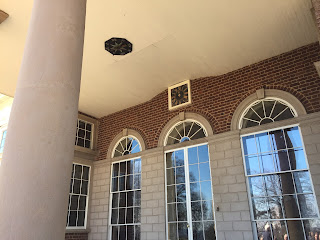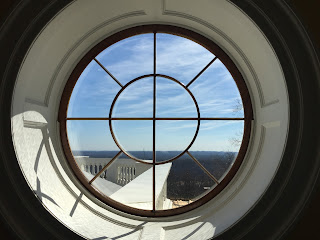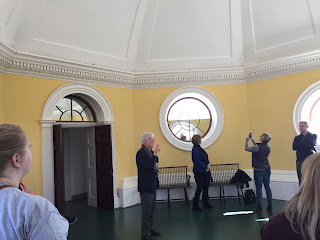Monticello
Location: 931 Thomas
Jefferson Pkwy, Charlottesville, VA 22902
Phone: (434)
984-9800
Website: https://www.monticello.org/
Hours: Open every day of the year except Christmas; Hours
vary by season – in the winter, hours are 10 a.m. – 5 p.m. on weekdays; Spring
and Summer hours are 8:30 a.m. – 7:30 p.m.
Ticket Price: https://www.monticello.org/site/tickets-and-tours
Adults: $28 ($25 with online discount) Mar - Oct
Adults: $22 ($20 with online discount) Nov - Feb
Children: $9 5—11 Year round (under 5 are free)
Homeschool discount? On most day, no. Monticello hosts an annual Home Educators’ Day each September. It will be 9/27 for 2017. Tickets are:
$15 Adults
$6 Students Ages 5 & Up
Free for Children 4 & Under
Visited: Tuesday, 2/17/17, 11:00 a.m. – 1:30 p.m.
The visitor's center is at the bottom of the hill near the parking area. Here, you'll find ticketing (if you haven't already bought your tickets online), a wonderful cafe full of fresh breakfast and lunch items, a gift shop, and a theater. A short film can be viewed here that runs every
20 minutes.
It introduces Jefferson and his life at Monticello. A shuttle is available to take visitors from this area to the main grounds at the top of the hill.
We purchased tickets for the "Behind the Scenes" tour and it was well worth it. In the past we’d only done the
regular house tour and it focused mostly on Jefferson (which is good), but the
behind the scenes tour provided much more insight into the family as well as
day-to-day life at Monticello. It’s the only president’s home to be a UN World
Heritage Site. Before going, you can download two free apps – one for Monticello
and the grounds, and one for Slavery at Monticello. ½ million people visit and
tour the house each year.
The main floor was undergoing renovations. Sally Hemmings’
room was being recreated as well.
Photography is not allowed inside the home due to the fact
that most of the furnishings are on loan and permission has not been given to
photograph, but you can take photos on the grounds. On the behind the scenes tour, we
got to visit the second and third floors. The stairwells are very steep and
narrow. The second floor lighting is provided by windows that start at the
floor (so from the outside they appear to be one long window – 1st
floor and 2nd floor). The third floor rooms’ light is provided by
skylights. The dome room is the only interior room that allows photos – it had no
furnishings.
Photography is also allowed in the cellar, where several hands-on activities can be found.
Jefferson wrote the Declaration of Independence. He was Governer of Virginia during the Revolutionary War and after the war, he was
minister to France. He was the nation’s first Secretary of State, the 2nd Vice President, and the 3rd President. He died in debt and his
estate was auctioned off. He is buried in the graveyard below Monticello.
Before you go: download Monticello's mobile apps and review the Families and Teachers page of the website. It's full of great information to help plan a fun family trip, as well as fun pages for kids.


































































